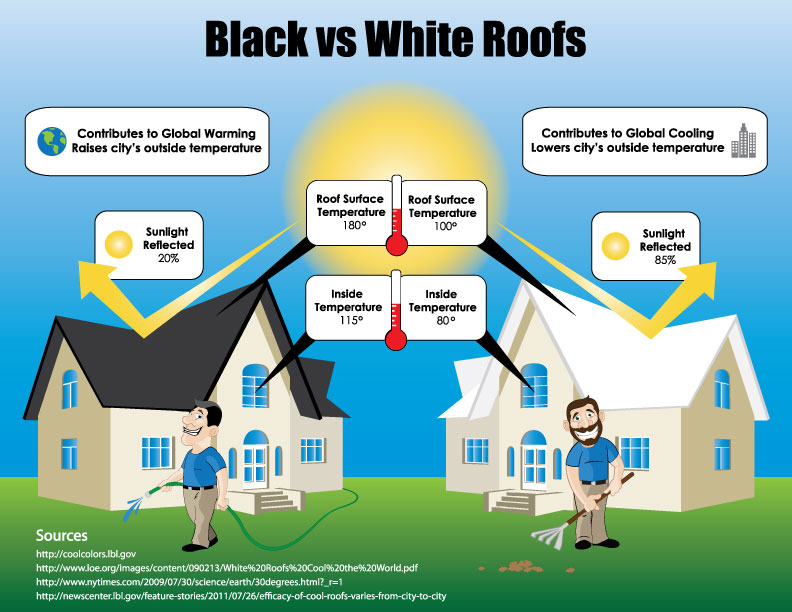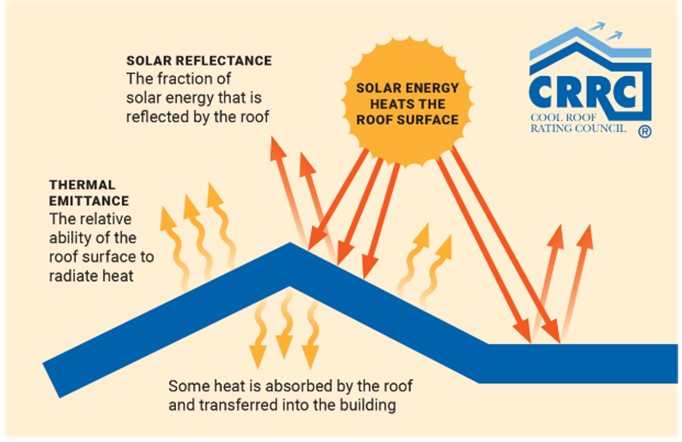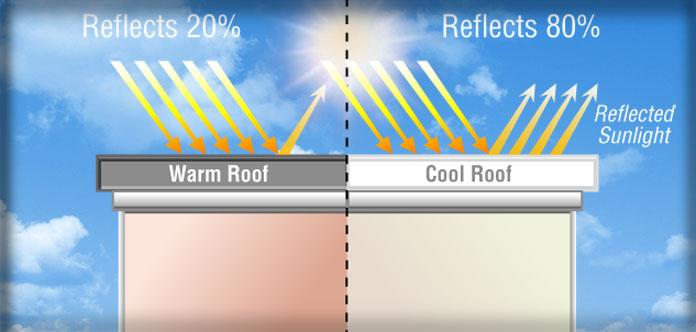Does A Roof’s Color Impact Energy Efficiency?
When it comes to roofing decisions, considerations often revolve around durability, materials, and style. However, an aspect that’s gaining increasing attention is the color of the roof.
The color of your roof doesn’t solely affect your home’s design – it may also impact its energy efficiency.
Rescue My Roof has been working with homeowners for over a decade, helping them achieve roof’s that keep their homes safe. Today, we’ll help you to determine whether or not the role of your roof’s color in energy efficiency is a cause for concern.
In this article, we’ll unravel the color conundrum and explore whether a roof’s color can indeed impact its energy efficiency. Ultimately, you’ll know if it should have a big impact on the shingle color you choose.
Understanding the Basics of Roof Color
There can be a big difference between light and dark colors and their respective impacts on your home’s temperature. Here’s what you need to know:
Light vs. Dark Colors

The first consideration is the basic contrast between light and dark roof colors. Light-colored roofs, often in shades of white, beige, or light gray, are reflective and tend to bounce sunlight away.
On the other hand, dark-colored roofs, such as black, dark gray, or deep brown, absorb sunlight, converting it into heat.
Reflectance and Absorptance

Reflectance and absorbance are key factors that determine how much sunlight a roof reflects or absorbs. A roof with high reflectance reflects more sunlight and absorbs less heat, contributing to a cooler indoor environment. Conversely, a roof with high absorbance absorbs more sunlight and can result in a warmer interior.
Black-shingled roofs generally get 10-15 degrees warmer than white-shingled roofs on sunny days. During the evening, though, black-shingled roofs lose heat faster than white-shingled ones. Both black- and white-shingled roofs show similar nighttime temperature profiles. The color heat absorption dictates peak roof sheathing temperatures.
But color isn’t the only consideration. Roof color alone doesn’t affect home temperature and energy efficiency. The roofing material also determines how reflective your roof is. For example, asphalt shingles are less reflective than metal or rubber roofing materials. Therefore, light-colored asphalt shingles may absorb more heat than a dark-colored metal roof.
Additionally, some shingles, like Atlas’ Pinnacle Sun Shingles, have granules with a reflective coating specifically designed to keep your home cooler regardless of the roof’s color. If more shingles adopt this technology in the coming years, a roof’s color and its impact on energy efficiency will become redundant.
Roof Color’s Impact on Energy Efficiency
Cool Roofs for Warm Climates:

In regions with predominantly warm climates, opting for a light-colored or reflective roof—commonly known as a “cool roof“—can be beneficial.
Cool roofs reflect a significant portion of the sun’s rays, reducing the amount of heat absorbed by the building. This reflective quality can result in lower cooling costs during hot seasons.
Warm Roofs for Cold Climates:
Conversely, in colder climates, a dark-colored roof that absorbs more sunlight can contribute to winter energy efficiency. This warmth absorption can assist in melting snow and ice, reducing the risk of ice dam formation and potential water damage.
Energy Savings:
Studies suggest that choosing the right roof color can lead to noticeable energy savings. The U.S. Department of Energy estimates that a cool roof can save homeowners up to 15% on cooling costs, particularly in warm climates.
3 Things to Consider to Maximize Your Roof’s Energy Efficiency
Do you want to maximize energy efficiency with your new roof? Here are the top three things to consider.
1. Local Climate Considerations
It’s important to consider the local climate when deciding on roof color. Factors such as the amount of sunlight, average temperatures, and seasonal variations should all be taken into account.
Consulting with a roofing professional familiar with regional conditions can help you make an informed decision.
2. Roofing Material Matters
The type of roofing material also plays a role in energy efficiency. Some materials inherently have reflective properties, regardless of color. Metal roofs, for example, are known for their natural reflectivity.
If you want to maximize your energy efficiency, it’s best to opt for the Atlas Pinnacle Sun Shingles, or an alternative material like metal for the best results.
3. Building Design and Insulation
The overall design of your home and the quality of insulation also influence energy efficiency. A well-insulated home with efficient ventilation can mitigate the impact of roof color on energy consumption.
Learn more about the importance of insulation with “What Is Roof Insulation?”
Replacing Your Roof With Increased Energy Efficiency
While the color of your roof can indeed influence its energy efficiency, it’s crucial to approach this decision with a comprehensive understanding of your local climate, the reflective properties of roofing materials, and the specific needs of your home.
Whether you opt for a cool or warm roof, the goal is to strike a balance that aligns with your climate and contributes to optimal energy performance. Consult with roofing professionals and consider all factors to make an informed decision that not only enhances your home’s aesthetics but also contributes to its overall efficiency.
You can learn more about planning for a roof replacement with “How Long Does A Roof Layover Last” and “7 Roofing Facts Homeowners Must Know.”
Do you need a roof replacement in southeastern Wisconsin? You can find everything you need for a roof replacement and more with Rescue My Roof. Contact us today to get a free estimate.


